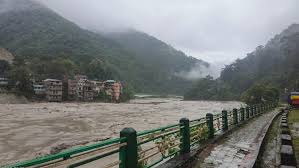Discovering Sikkim: The Hidden Gem of the Himalayas

Introduction
Sikkim, a small state located in the Northeastern region of India, is often referred to as a hidden gem of the Himalayas. Known for its breathtaking landscapes, rich biodiversity, and vibrant culture, Sikkim has recently gained attention for its significant strides in tourism and sustainable development. This article delves into Sikkim’s importance, its recent developments, and its implications for both local and global audiences.
Recent Developments
Sikkim has emerged as a popular tourist destination, which has been intensified by the state’s unique natural beauty and cultural heritage. According to the Ministry of Tourism, Government of India, Sikkim witnessed an influx of over 1.2 million tourists last year, reflecting a notable 30% increase from the previous year. The state has implemented various initiatives to promote eco-tourism and sustainable travel, ensuring that its natural environment is preserved while providing economic benefits to the local communities.
Additionally, the Sikkim government has introduced policies aimed at improving infrastructure, including better roads and communication networks. The recent inauguration of the ‘Atal Tunnel’ has further enhanced accessibility, making it easier for tourists to reach the popular destinations within the state, including Gangtok, Pelling, and Tsomgo Lake.
Cultural Significance
Sikkim is also known for its rich cultural tapestry, being home to several ethnic groups including Lepchas, Bhutias, and Nepalis. The state celebrates numerous festivals such as Losar, Dasain, and Tihar that showcase the cultural diversity and traditions. Furthermore, Sikkim’s commitment to being the first fully organic state in India, with all its farms adhering to organic practices, not only promotes healthy living but also integrates traditional agricultural methods into its modern development.
Conclusion
Sikkim exemplifies a harmonious blend of nature and culture. As it progresses towards more sustainable tourism and development, the state’s efforts could serve as a model for other regions facing similar challenges. The ongoing investments in infrastructure and eco-tourism may continue to attract visitors, further boosting the local economy while preserving the rich heritage and natural beauty that make Sikkim truly unique. For travelers and stakeholders alike, Sikkim represents a promising future rooted in preservation and prosperity, making it essential to watch how this small yet powerful state continues to evolve.









